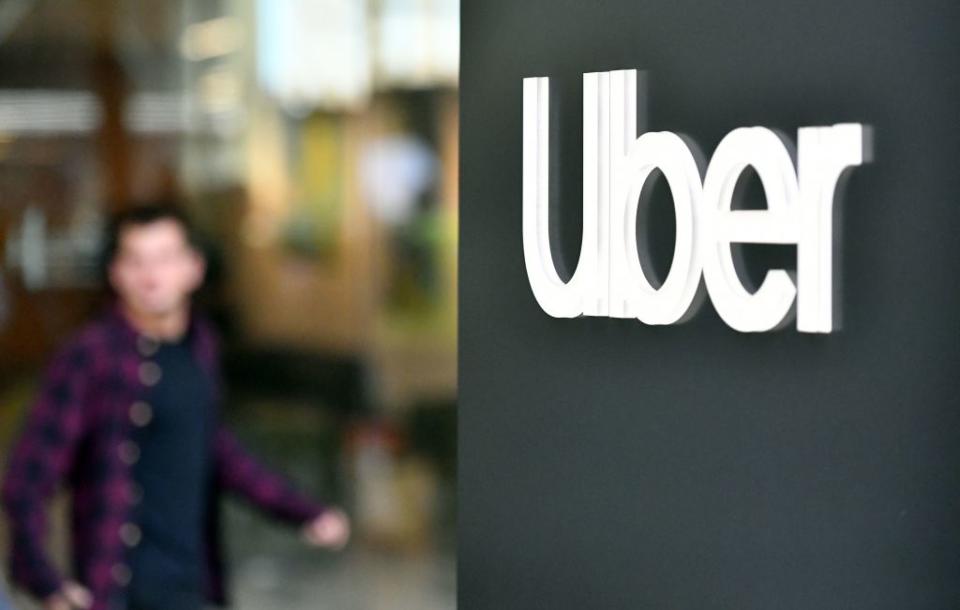Uber shares fall despite revenue beat as its core operations continue to lose money

Today after the bell U.S. ride-hailing giant Uber reported its second-quarter financial results. The company’s numbers come a day after its domestic rival, Lyft, shared its own Q2 earnings.
Notably while Lyft managed to generate positive adjusted EBITDA in the second quarter, Uber did not. However, Uber did generate positive net income of $1.14 billion in the quarter thanks to its investments in other companies like Didi and Aurora Innovation.
From the top, Uber’s gross bookings totaled $21.9 billion in the second quarter, up 114% compared to the year-ago period. That gross platform spend resulted in $3.93 billion in revenues at Uber, up 105% from the company’s $1.91 billion Q2 2020 results.
Its Q2 performance was enough to keep Uber on track toward its pre-tax profitability goal, with the company reiterating that it will reach adjusted EBITDA profitability by the fourth quarter, per its earnings release.
Analysts had expected the company to post revenues of $3.74 billion, and earnings per share of -$0.51, per data collected by Yahoo Finance. While beating expectations on revenue, the company did not have the same success with its forecasts on its adjusted EBITDA loss. Analysts had expected a narrower adjusted EBITDA loss of -$324.5 million. The adjusted EBITDA reality was a loss of $509 million.
Shares of Uber fell more than 8% in after-hours trading. Shares have since recovered, but are still off by more than 6%.
Digging into the company’s individual business operations, in gross bookings terms, Uber’s ride business posted the largest growth in Q2 2021, growing 184% from its year-ago result to $8.84 billion. Delivery, a larger chunk of gross bookings at the company, grew 85% in Q2 2021 to $12.91 billion compared to its year-ago comparable.
Uber derives less revenue per dollar of delivery gross bookings than it does in ride-hailing, with its two businesses generating $1.96 billion and $1.62 billion in revenues, respectively, despite their massive differential in total consumer spend.
Freight, Uber’s smallest named division in revenue terms, grew 64%, to $348 million. Despite its small size, Uber has been expanding the division and making strategic acquisitions and partnerships as a means to help the segment break even on an adjusted EBITDA basis by the end of 2022.
Last month, Uber Freight acquired Transplace from private equity group TPG Capital for about $2.25 billion. The deal involved $750 million in Uber stock, with the remainder in cash.
Uber’s two key businesses were not profitable in aggregate, with the company’s ride-hailing and delivery businesses not managing to save the company from negative adjusted profits. However, Uber’s rides business did manage to post $179 million in positive adjusted EBITDA on its own -- down from the company’s Q1 2021 result -- while the company’s delivery business posted another quarter of negative adjusted profits, turning in -$161 million worth of adjusted EBITDA.
Recall that Uber’s ride-hailing adjusted EBITDA pales in comparison to the company’s unallocated expenses; Uber’s adjusted EBITDA for the second quarter of 2021 came to -$509 million, an improvement of 39% compared to the year-ago period, but still a long way from breakeven.
But Uber’s quarter had a highlight to share in the form of other income. Uber’s operating loss of $1.19 billion was more than ameliorated by the company earning $1.93 billion in nonoperating income. That was mostly derived from $1.91 billion in unrealized gains on “debt and equity securities,” including “a $1.4 billion unrealized gain on [its] Didi investment and a $471 million unrealized gain on [its] Aurora Investments recognized in the second quarter of 2021.”
Didi went public in the second quarter.
Turning to geographic results, Uber’s fastest recovery came in the APAC region, where revenue soared 227% from $217 million in the year-ago quarter to $709 million in the company’s most recent three-month period. EMEA came in second, in growth terms, expanding top line 159% from $358 million to $929 million over the same time frame. The United States and Canada posted revenue growth of 76% from $1.13 billion to $1.98 billion, and Latin America managed a more modest 44% rebound in the quarter.
